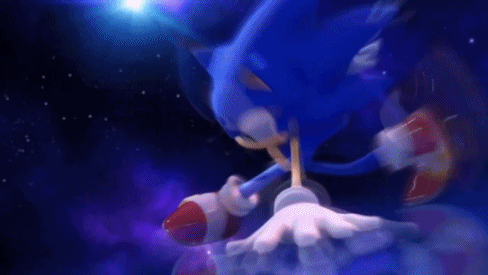Sonic the Hedgehog was quite the revolutionary game when it debuted on the Sega Genesis console back in the summer of 1991. Sonic was Sega’s answer to the uber-popular Mario character created by Nintendo. Though Sonic never reached Mario’s astronomical level of popularity, Sonic the Hedgehog was lauded as a breakthrough title in the speed-oriented gaming niche. Nearly 24 million copies of Sonic the Hedgehog were sold.

Sonic the Hedgehog gameplay is centered on speed. Players control a blue hedgehog (Sonic) while passing through beautifully designed stages at lightning-fast speeds. Though the game’s storyline is secondary to the fast-paced action, it is worth noting. Sonic lives a fairly uneventful existence until Doctor Ivo Robotnik, commonly referred to as “Doctor Eggman”, emerges as a threat to world peace. This antagonist is hell-bent on establishing global dominance and Sonic is the only roadblock in his way. The game player’s mission is to guide Sonic through side-scrolling platform-style stages in to collect rings, avoids collisions, dodge enemy attacks and ultimately reach Doctor Eggman before he can establish world domination. If Doctor Eggman is allowed to collect all of the world’s chaos emeralds and destroy Sonic, the world will be under his control.
The appeal of Sonic the Hedgehog gameplay is primarily its fast pace. Yet it is not all about high-speed action. The game also featured crisp graphics, made fantastic use of color and displayed quite the admirable irreverence for convention. When the game debuted, it was the first of its kind. This breakneck side-scroller sent Sonic spinning around colorful stages at rates of speeds not yet achieved by a platform protagonist. Sonic’s speed made Mario and Luigi look like molasses personified. The masses flocked to Sonic the Hedgehog, helping Sega sell more than 30 million Genesis consoles across the world.

Sonic the Hedgehog in Virtual Reality
If Sonic the Hedgehog were ported to virtual reality, it would be an easy sell. The game would likely be played from the third-person perspective in VR just as it is played on the Sega Genesis console. One can only imagine the vertigo that would be induced from a first-person simulation of Sonic’s frantic action in virtual reality. However, a third-person viewpoint would still prove quite enjoyable. Motion-tracking equipment would monitor the direction the player moves as well as his rate of speed. Each physical movement would translate to Sonic’s in-game movements across the game’s gorgeous stages.

What is Sonic the Hedgehog was truly VR Fitness?
Sonic the Hedgehog would provide an amazing workout in virtual reality. Imagine sending Sonic into his signature spin by running at a fast rate of speed. The faster you run, the faster Sonic would zoom through the course. This is exactly the type of positive reinforcement necessary to encourage fitness-seekers to give their all during a VR exercise session. Sonic would hop up when players jump and move to the sides when players sidestep stage hazards and enemy attacks.
.jpg/1200px-Sonic_the_Hedgehog_at_London_Marathon_2011_(5630113835).jpg)
Perhaps Sonic would even pick up additional speed when players crouch after running fast enough to generate Sonic’s signature tight spinning. Play the game long enough in VR and upwards of 500 calories could be burned per gaming session. Players would be motivated to run as fast as they can to complete stages in record time. The game would prove even more enjoyable and rewarding in the context of physical fitness if players’ stage completion times were immediately uploaded to an online leaderboard that ranked performance according to speed.




